Tasty treats are a fantastic way to liven up your cat's day. Perhaps in your house, all the furry friends gather for a bedtime treat. Or perhaps you use cat treats to introduce your kitty to a new toy. We've seen people use treats to reward pets for allowing themselves to be groomed.
Whether you just want to pamper your pet or you're looking for a simple reward, healthy treats are the way to go! Of course, some treats for your cat are more nutritious than others. So, if you're regularly feeding your cat a particular treat, be diligent when it comes to checking labels for calories, ingredients, and where the treats are sourced or manufactured.
What Type of Cat Treats Are Considered Healthy?
When searching for healthy and natural cat treats, it's essential to focus on options that provide real nutritional benefits while avoiding those loaded with unnecessary fillers or artificial ingredients. Many feline specialists and veterinarians emphasize that while treats can be a fun way to bond with your cat, they should constitute only a small portion of their overall diet. So, what should you look for in the best cat treat?

Natural or Organic Ingredients
The best cat treats are made with natural or organic ingredients. Look for organic cat treats with real meat like chicken or duck as the primary ingredient, and avoid those with artificial preservatives, colors, or flavors. Natural cat treats are not only healthier but also more aligned with a cat's dietary needs.
High Nutritional Value
Ideally, the treats you choose should offer some nutritional value, whether it's added vitamins, minerals, or a boost of protein. For example, homemade cat treats made with simple, whole ingredients like meat and vegetables can be a great way to ensure your cat is getting beneficial nutrients without added fillers.
Since most crunchy cat treats don't contribute much beyond extra calories, it's also important to ensure that treats make up no more than 10% of your cat's daily caloric intake. This means that the majority of their calories—around 90%—should come from a high-quality, nutritionally complete cat food. Overfeeding treats can lead to weight gain and related health issues.
Related Post: Natural Cat Treats: Snack Smarter And Better Your Pet's Life!
Variety of Options
Offering a variety of cat treats can help keep your cat interested and engaged. You can find baked treats, chewy treats, dental treats approved by the Veterinary Oral Health Council, and even freeze-dried cat treats, each with different textures and flavors. Cats love rotating between different types of treats, and it can prevent them from getting bored and ensure they receive a range of nutrients.
Specific Dietary Needs
If your cat has specific dietary needs, such as sensitivities or allergies, choose treats that cater to those requirements. For example, grain-free or hypoallergenic treats can be a better option for cats with certain health conditions.
Homemade Treats
Making homemade cat treats allows you to control exactly what goes into them, ensuring that your cat only consumes the best ingredients. You can create a simple recipe using fresh chicken, a little water, and some cat-safe herbs. Roll the dough into a log, slice it into small pieces, and bake it for a fresh, healthy snack. Just make sure to do research on what human food can cats eat to avoid mishaps.
Remember, while it can be tempting to spoil your cat with treats, moderation is key. Ensuring your cat's diet remains balanced will keep them healthy and happy in the long run.
Ingredients in Cat Treats to Avoid
The ingredients listed below are not necessarily harmful or bad for cats across the spectrum. However, extended exposure to these less-than-healthy ingredients is likely to increase the risk of a negative side effect in most cases. We recommend keeping this list handy so that when it's time to make your next cat food purchase, you can make the best-informed decision possible on what can cats eat.
Wheat Gluten
Wheat gluten is a popular ingredient in a vegan diet because you can use it to make a meat-like, high-protein food substance known as seitan. As an ingredient in a portion of cat food, though, wheat gluten completely misses the mark on making the healthiest cat food. It is mostly used to jack up the crude protein numbers without adding more meat, which can get too expensive for manufacturers to want to pay for.
Meat & Bone Meal
The Association of American Feed Control Officials describes meat & bone meal as "rendered product from mammal tissues, including bone, exclusive of any added hoof, horn, hide trimmings, hair, manure, blood, rumen and stomach contents." Healthy cat treats will not contain meal of any kind.
Rendered bone, meat, and chicken meal is one of those products that truly could contain anything. We know this may sound very uncomfortable, but there's some alarming information (or lack thereof) concerning the product that goes into these "meat & bone meal" ingredients at rendering plants. It could be roadkill, zoo animals, euthanized pets, expired meat, or even the styrofoam wrapper that came in.
BHA (Butylated Hydroxyanisole)
Butylated Hydroxyanisole is an antioxidant found in artificial preservative in animal food. It has been shown to cause tumors in lab animals, despite being labeled as "safe in low doses." According to the Department of Health and Human Service's National Toxicology Program, BHA is "reasonably anticipated to be a human carcinogen."

Small amounts of BHA now and then will likely not harm your cat. But BHA introduces more risks to your cat's well-being than necessary (the necessary amount of risk being 0, there are almost always less risky alternatives). This is especially the case if your cat is eating BHA every day. There are always better and more natural alternatives to preserving your cats' food.
Food Dyes
A little bit of food coloring likely won't hurt, but it has repeatedly been linked to issues ranging from containing a carcinogen to hyperactivity in children. There is no reason whatsoever to add color to any animal's food. Even if you somehow managed to remove the physical risk, food coloring would still be unnecessary. Animals do not care what color their food is.

How Often Can I Give Healthy Treats to My Cat?
As long as you limit treats to 10% of their daily calories, you're in the clear! Too much of a good thing can be unhealthy, but as long as you don't feed your kitty more than 10% of its daily calories in treats, feel free to give as many treats as you like. We recommend saving treats for training or rewarding good behavior. This will make the treats even more special for your feline companion and reinforce that they are a "sometimes food." Treats are a great way to incentivize a cat.
Which Cat Treats Are Best?
Are you looking to purchase premium CBD cat treats from a brand that cares? Well, look no further than Holistapet! We are the #1 supplier of high-quality CBD cat treats. Our yummy salmon flavor CBD treats are 100% grain-free, delicious and nutritious, making these crunchy little bites absolutely irresistible to any four-legged feline friends you might have!
HolistaPet CBD Cat Treats are the perfect treat to reward your favorite feline friend with after a long, hard day. These treats contain only the finest natural ingredients and never include any of the following:
- Meals
- Corn
- Wheat
- Animal by-products
- Artificial colors
- Synthetic flavors
- Unnatural preservatives
Where Can I Find Healthy Feline Treats?
You can find tons of healthy treats for your four-legged feline friend at our website! Before starting HolistaPet, we had noticed a surprising lack of high-quality CBD treats for pets online, so we took it upon ourselves to fill that void. A third-party lab tests every product we make to guarantee that your cat gets an accurate dosage.
Final Thoughts - Healthy Treats for Cats
It's a natural and loving response to want to treat your feline friend! Providing them with treats can provide a wonderful bonding opportunity through playtime and cuddles. Just remember that a treat should be exactly that, a 'treat.' Remember that a little can go a long way! If your cat is overweight or has an underlying health condition, speak with your vet about which treats would work best.

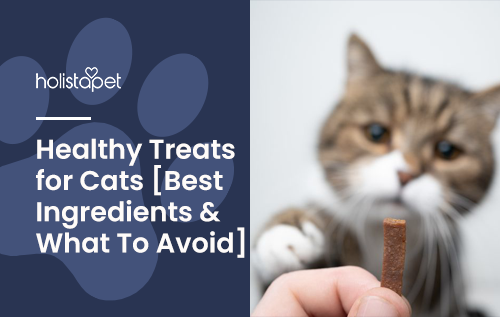

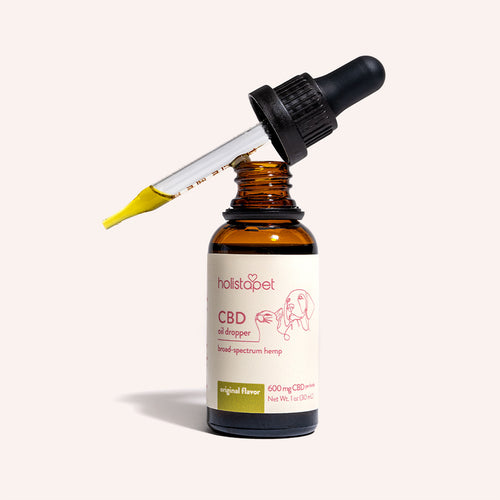 CBD Oil for Cats - Fast Acting
CBD Oil for Cats - Fast Acting
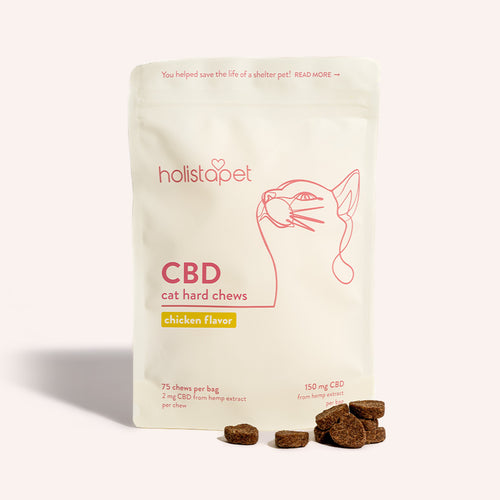 CBD Cat Treats - Easy Dose
CBD Cat Treats - Easy Dose
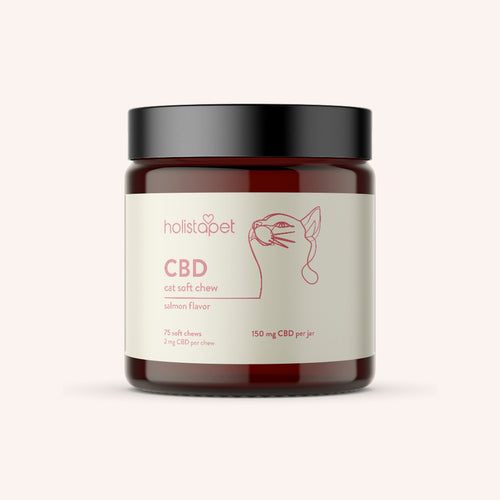 CBD Calming Chews for Cats - Highly Rated
CBD Calming Chews for Cats - Highly Rated
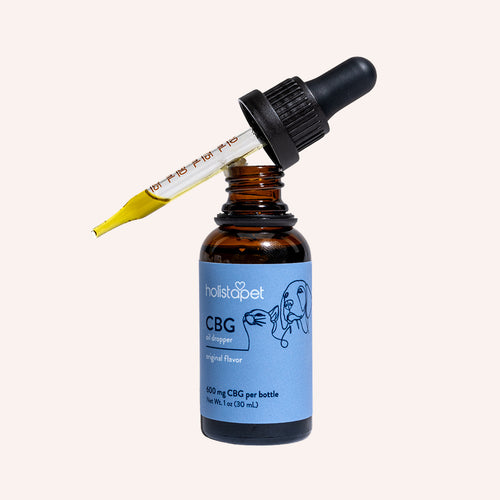 CBG Oil for Dogs and Cats - Loved by Thousands
CBG Oil for Dogs and Cats - Loved by Thousands


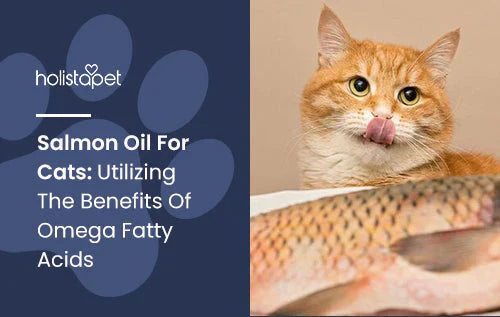
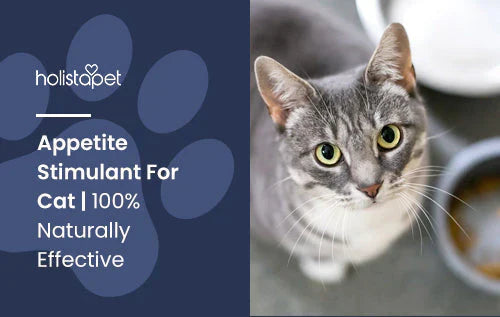

Leave a comment
All comments are moderated before being published.
This site is protected by hCaptcha and the hCaptcha Privacy Policy and Terms of Service apply.